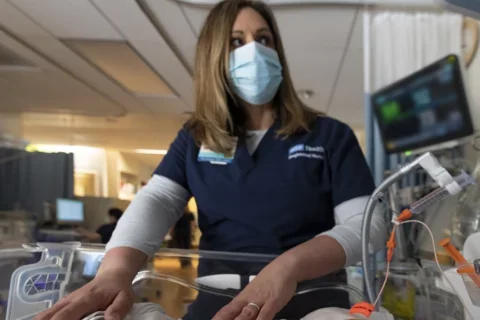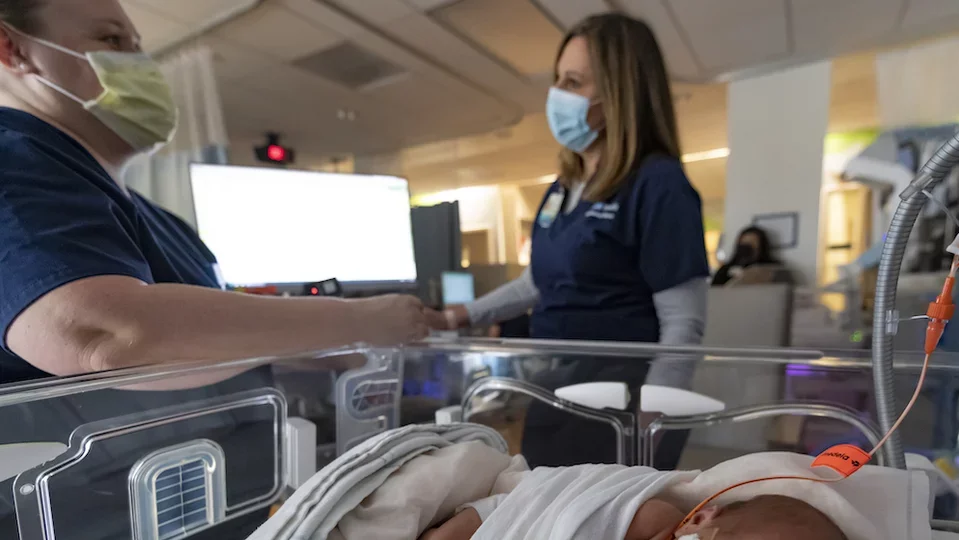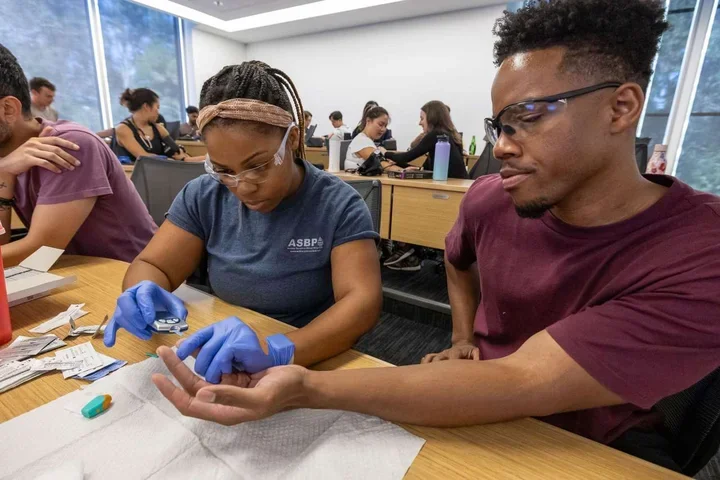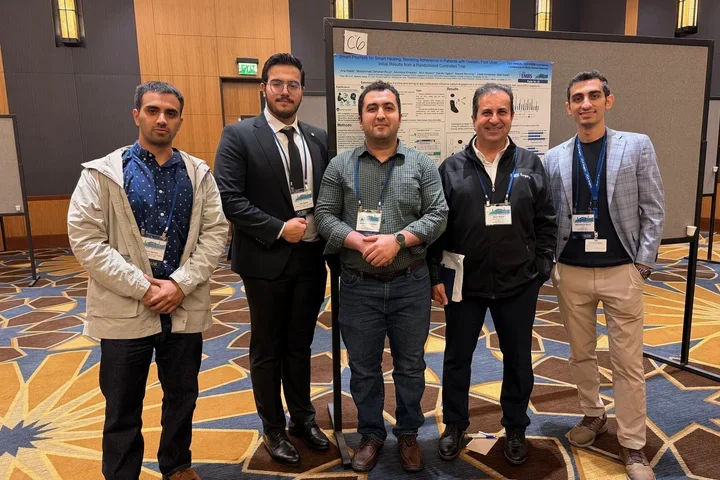How to Prevent SIDS
Medical Expert Interview

Meet Our Expert: Juliet Sasinski
Juliet Sasinski is a neonatal intensive care unit (NICU) clinical nurse specialist at UCLA Health.
After growing up with dreams of working in healthcare, Juliet explored a range of different medical professions during college. In nursing, she found a perfect match with her skills and interests. In the NICU, she found her place and her people.
“I saw how clinical nurse specialists impacted babies in the NICU,” Juliet says, explaining what motivated her to transition from a bedside nurse into a clinical nurse specialist.
Juliet especially admired how the NICU nurses helped babies have optimal immediate and far-reaching outcomes.
“We're touching them as babies, but we're really having an impact on their development, their childhood, and their overall well-being throughout life.”
SIDS Meaning: What Is SIDS?
What Does SIDS Stand For? SIDS stands for sudden infant death syndrome.
SIDS Definition: SIDS refers to the sudden and unexplained death of an infant.
SUID Meaning: What Is SUID?
What Does SUID Stand For? SUID stands for sudden unexpected infant death.
SUID Definition: SUID refers to the sudden and unexpected death of an infant.
SIDS vs SUID: What’s the Difference?
SUID is a term that encompasses all sudden and unexpected infant deaths. SIDS falls under the broader category of SUID.
One question may help differentiate between the terms: Is there an explanation for the sudden infant death?
- SIDS cases are always unexplained.
- SUID cases, while unexpected, include those that can be explained.
- All cases of SIDS are both unexplained and unexpected and fall under the broader category of SUID.
Example of SUID: A case where an infant is found dead, and the cause of unexpected death is explained by the presence of a blanket over their face indicating accidental suffocation.
Example of SIDS and SUID: A case where an infant is found dead, and the cause of unexpected death remains unexplained.
Takeaway: SIDS and SUID are different terms for classifying sudden infant death. Evidence-based strategies for preventing SIDS help reduce the risk of all types of sudden infant death.

How Common Is SIDS?
According to the Centers for Disease Control and Prevention (CDC) SIDS Statistics…
In 2020, the SIDS rate was about 38 deaths per every 100,000 live births.
In 2020, the SUID rate was about 92 deaths per every 100,000 live births.
What Causes SIDS?
The causes of SIDS remain unknown.
Researchers have identified potential abnormalities in part of the brain that controls breathing during sleep. This may impact how deeply infants sleep and subsequently their ability to wake up in response to signals that their breathing may not be adequate, but more investigation is needed to determine if and how this mechanism contributes to SIDS.
SIDS Risk Factors
The following characteristics are associated with an increased risk of SIDS:
- Having a low birth weight
- Being born prematurely
- Being born to a mother who is less than 20 years old
- Having older siblings who have died of SIDS
“Since we don’t know what causes SIDS, a lot of these factors could be familial or environmental, or a combination of both,” Juliet adds.
When Is SIDS Most Common?
Infants are most likely to experience SIDS between the ages of 2 and 4 months.
Why Does SIDS Peak at 2-4 Months?
The widely accepted explanation for the SIDS peak has to do with the timeline of brain development.
“Up to 4 months old, the part of the brain that controls breathing and wakefulness is under a lot of development,” Juliet explains. “The first 4 months is the window during early life when the brain undergoes the most change.”
When Does the Risk of SIDS Decrease?
According to the National Institutes of Health (NIH), 90% of SIDS cases occur before 6 months of age.
However, Juliet says there is still risk up until a year, which is why they recommend taking SIDS prevention measures, especially practicing safe sleep, until the baby is one year old.
How to Prevent SIDS
Practice Safe Sleep Strategies
The dos and don'ts for creating a safe sleep environment include:
Do put babies to sleep on their backs.
- Don’t put babies to sleep on their sides or bellies.
Do put babies to sleep in a crib, bed, or bassinet.
- Don’t put babies to sleep in swings or car seats.
Do put babies to sleep on a firm mattress with a safe swaddle or a sleep sack.
- Don’t use bumpers or put stuffed animals or extra blankets that could come loose into the sleep environment.
Do put babies to sleep wearing only one more layer of clothing than what an adult would generally find comfortable.
- Don’t overdress babies. This may lead to overheating, another risk factor for SIDS.
Do share a room with the baby until they’re 6 months old.
- Don’t share a bed with the baby.
“A safe sleep environment is a separate environment from the parents’ sleeping space,” Juliet says. “It could be a co-sleeper product as long as the baby has their own space to sleep.”
She explains that room sharing is recommended because the natural background noise that comes with room sharing may prevent babies from getting into extra deep sleep.
Breastfeed the baby for 6 to 12 months
Breastfeeding can be protective against SIDS.
“Even just a few months of breastfeeding can lower the risk of SIDS by about 50%,” Juliet says. “We encourage parents, even if they don't plan to breastfeed for a full year or even 6 months, to start and breastfeed for a couple of months.”
Breastfeeding, Juliet explains, helps the immune system become stronger. Additionally, the brain has been shown to grow more maturely in breastfed babies.
After establishing breastfeeding, Juliet recommends putting babies to sleep with a pacifier, a prevention strategy shown to decrease incidents of SIDS.
“We don't know the exact mechanics behind it, but we think sucking on the pacifier may prevent babies from getting too deep into sleep and rolling over without waking.”
Eliminate environmental SIDS risk factors
The SIDS rate among babies exposed to cigarette smoke is higher than it is among babies who live in environments free from smoke.
“If a family has any members who smoke cigarettes, we advise them to smoke outside,” Juliet says.
Cigarette smoke, she explains, can also impair a baby’s immune system.
SIDS Symptoms
Are There Signs of SIDS Before It Happens?
Because SIDS is unexplained, there are no established signs or warning symptoms of SIDS.

SIDS Awareness Month
SIDS Awareness Month is observed every October in the United States. The NIH usually releases a different toolkit each year to help people learn about SIDS and spread awareness.
Common Misconceptions About SIDS
Juliet says she encounters more SIDS miseducation than misconceptions. New parents consume so much information, including what they actively seek out as well as what they receive unsolicited from a variety of sources.
“People will hear everything, especially as a first-time parent,” Juliet says. She advises new parents to rely most heavily on evidence-based information provided by medical professionals.
She also wants to reinforce that SIDS really is unexplained and SUID really is unexpected. However, some people express mistaken assumptions that someone or something must have caused the infant deaths.
In the past, for example, some parents suspected vaccines of causing SIDS. Juliet explains they’d jumped to conclusions after observing a correlation, in this case a simple coincidence: Due to the natural timeline of early growth and development, SIDS is most prevalent in babies younger than 6 months old. This is also the age range when most babies get a number of different vaccines.
“There may be a correlation in age, but there's no causative link between vaccines and SIDS.”
One Thing People Should Know About SIDS
Juliet understands that, being unexplained, SIDS may be terrifying to new parents and caregivers. She wants people to remember, instead of focusing on the unknowns, that established prevention measures have been shown to work in protecting against SIDS.
“We don’t know why SIDS happens, but we do know about proven ways to prevent it,” she says.
“It empowers parents to know there’s something they can do.”



